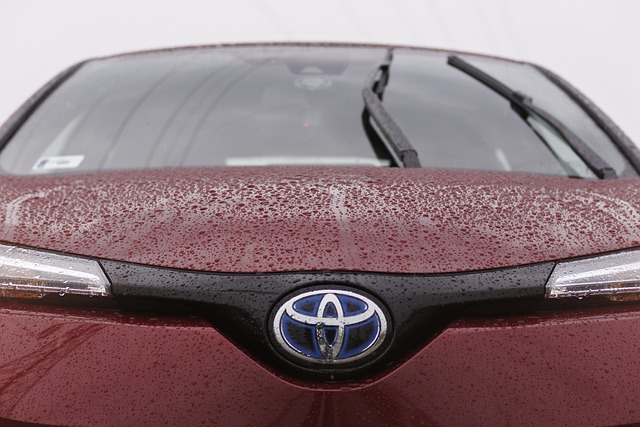Hydrophobic Coatings: The Future of Automotive Exterior Protection
The world of automotive care is on the brink of a revolution, and it's not coming from the engine bay or the transmission. Instead, it's happening on the very surface of our vehicles. Hydrophobic coatings, a cutting-edge technology borrowed from nature, are set to transform how we protect and maintain our cars' exteriors. This innovation promises to keep vehicles cleaner, reduce maintenance, and even improve safety on the road.

The Science Behind Hydrophobic Coatings
At its core, hydrophobic technology is all about repelling water. The term hydrophobic literally means “water-fearing” in Greek. These coatings create a surface that water cannot adhere to, causing it to bead up and roll off instead of spreading out and sticking. This effect is achieved through a combination of surface chemistry and nanoscale texturing.
The inspiration for hydrophobic coatings comes from nature. The lotus leaf, known for its self-cleaning properties, has been a particular source of fascination for scientists. The leaf’s surface is covered in microscopic bumps coated with a waxy substance. This structure creates a high contact angle between water droplets and the leaf surface, causing water to bead up and roll off, taking dirt particles with it.
In automotive applications, hydrophobic coatings typically consist of silica nanoparticles suspended in a solvent. When applied to a vehicle’s surface, these particles create a microscopic rough texture. This texture, combined with the chemical properties of the coating, mimics the lotus leaf’s water-repelling capabilities.
Evolution of Automotive Surface Protection
To appreciate the significance of hydrophobic coatings, it’s essential to understand the evolution of automotive surface protection. In the early days of the automobile, paint was primarily used for aesthetics rather than protection. As manufacturing techniques improved and cars became more widespread, the need for better protection against the elements became apparent.
The 1950s saw the introduction of clear coat finishes, which added a layer of transparent paint over the colored base coat. This innovation significantly improved paint durability and shine. The following decades brought advancements in synthetic waxes and sealants, offering better protection and longer-lasting results than traditional carnauba wax.
The early 2000s marked the beginning of the ceramic coating era. These silicon dioxide-based products formed a semi-permanent bond with the vehicle’s paint, providing superior protection against UV rays, chemical stains, and minor scratches. Hydrophobic coatings represent the next step in this evolution, offering not just protection but also active self-cleaning properties.
Applications Beyond the Paint
While much of the focus on hydrophobic coatings has been on vehicle bodies, the technology has far-reaching applications across various automotive components. One of the most promising areas is in improving visibility and safety during inclement weather.
Windshields treated with hydrophobic coatings can dramatically improve visibility during rainstorms. Water beads up and quickly rolls off the glass, reducing the need for wipers and improving the driver’s line of sight. This technology is particularly beneficial for side windows and mirrors, which lack wipers altogether.
Headlights are another area where hydrophobic coatings shine. By preventing water and dirt accumulation on headlight lenses, these coatings can help maintain optimal illumination in all weather conditions. This not only improves safety for the driver but also for other road users.
Even wheels can benefit from hydrophobic technology. Coated wheels resist brake dust accumulation and are easier to clean, potentially extending the life of the wheel finish and reducing maintenance time.
Impact on Car Care and Maintenance
The introduction of hydrophobic coatings is set to revolutionize car care routines. Traditional methods of washing and waxing may become less frequent or even obsolete for vehicles treated with these advanced coatings.
One of the most significant benefits is the reduction in washing frequency. As water beads up and rolls off the surface, it takes dirt and contaminants with it. This self-cleaning effect means that vehicles stay cleaner for longer, even in challenging environments. When washing is necessary, the process becomes quicker and easier, as dirt and grime are less likely to adhere strongly to the surface.
The durability of hydrophobic coatings also promises to reduce the need for frequent reapplication of protective products. While traditional waxes may need to be applied every few months, some hydrophobic coatings can last for years with proper care. This longevity not only saves time but can also be more cost-effective in the long run.
Challenges and Future Developments
Despite the promising benefits, hydrophobic coatings face several challenges that need to be addressed for widespread adoption. Durability remains a concern, as the coatings can degrade over time due to environmental factors and mechanical wear. Researchers are working on improving the longevity of these coatings, exploring new chemical formulations and application techniques.
Another challenge lies in the application process itself. Currently, many hydrophobic coatings require careful preparation of the surface and precise application to achieve optimal results. Simplifying this process for both professional detailers and DIY enthusiasts is crucial for the technology to gain widespread acceptance.
Looking to the future, we can expect to see hydrophobic technology integrated more deeply into the manufacturing process. Some automakers are already exploring the possibility of incorporating these coatings at the factory level, potentially offering vehicles with built-in hydrophobic properties.
The future may also bring smart hydrophobic coatings that can adapt to different conditions or even self-heal when damaged. As nanotechnology continues to advance, the possibilities for automotive surface protection are bound only by our imagination.
In conclusion, hydrophobic coatings represent a significant leap forward in automotive exterior protection. By harnessing the power of nanotechnology and drawing inspiration from nature, these coatings promise to keep our vehicles cleaner, safer, and easier to maintain. As the technology continues to evolve, it’s clear that hydrophobic coatings will play an increasingly important role in shaping the future of automotive care and design.





